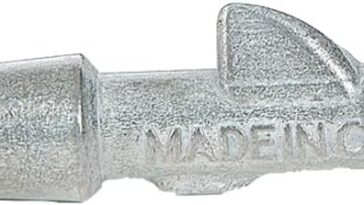- Bug Out Bag (BOB): A portable kit containing essential supplies and gear for survival during emergencies or evacuations.
- TEOTWAWKI: An acronym for “The End Of The World As We Know It,” referring to a catastrophic event that disrupts society on a global scale.
- SHTF: An acronym for “Sh*t Hits The Fan,” used to describe a scenario where a significant disaster or crisis occurs, requiring immediate action.
- EDC: Stands for “Everyday Carry,” referring to items individuals carry with them on a daily basis for preparedness and convenience.
- Prepping: The practice of preparing and making arrangements in advance to mitigate the effects of potential disasters or emergencies.
- Homesteading: A lifestyle of self-sufficiency characterized by growing food, raising livestock, and producing goods on one’s own land.
- Off-grid: Living independently from public utilities such as electricity, water, and sewer systems, often relying on alternative energy sources and sustainable practices.
- Bugging In: Choosing to stay at home or a designated shelter during an emergency rather than evacuating.
- Bugging Out: Leaving one’s home or current location to seek safety during an emergency or crisis.
- Gray Man: A person who blends in with their surroundings and avoids drawing attention to themselves, often employed as a survival strategy in urban or populated areas.
- OPSEC: Short for “Operations Security,” referring to the practice of safeguarding sensitive information that could compromise one’s security or preparedness efforts.
- BOV: Acronym for “Bug Out Vehicle,” a vehicle stocked with supplies and equipment for evacuating during emergencies.
- Go Bag: Similar to a Bug Out Bag, a Go Bag contains essential items for immediate evacuation or travel during emergencies.
- Cache: A hidden supply of food, water, gear, or other necessities strategically placed for retrieval during emergencies or as a backup resource.
- Get Home Bag: A compact emergency kit designed to help individuals reach their home safely in the event of a disaster or unexpected situation.
- Ham Radio: Amateur radio equipment used for communication during emergencies when traditional methods may be unavailable.
- MRE: Stands for “Meals Ready to Eat,” pre-packaged meals used by military personnel and civilians for sustenance during emergencies or outdoor activities.
- Tactical: Pertaining to equipment, clothing, or strategies designed for use in survival, self-defense, or military scenarios.
- Water Purification: The process of making water safe to drink by removing contaminants and pathogens, often using filtration, boiling, or chemical treatments.
- EMP: Short for “Electromagnetic Pulse,” a burst of electromagnetic energy capable of disrupting or damaging electronic devices and infrastructure.
- GHB: Abbreviation for “Get Home Bag,” a compact survival kit designed to help individuals return home safely during unexpected situations.
- INCH Bag: Stands for “I’m Never Coming Home Bag,” a comprehensive survival kit designed for long-term emergencies or situations where returning home may not be possible.
- Permaculture: A system of agricultural and social design principles centered around simulating or directly utilizing the patterns and features observed in natural ecosystems.
- Bushcraft: The practice of wilderness survival skills, including firecraft, shelter building, foraging, and navigation, often emphasizing the use of natural resources.
- CPR: Abbreviation for “Cardiopulmonary Resuscitation,” an emergency lifesaving procedure performed when a person’s heart or breathing stops.
- Tourniquet: A device used to stop severe bleeding by constricting blood flow to a limb, often employed in emergency medical situations.
- First Line Gear: Essential items worn or carried on one’s person, such as clothing, a knife, and a flashlight, typically for immediate access during emergencies.
- Second Line Gear: Additional equipment or supplies carried in a backpack or vest, including water, food, and shelter, to support sustained survival efforts.
- Third Line Gear: Larger, less frequently accessed items stored in a vehicle or base camp, such as extra clothing, tools, and bulk supplies.
- Land Navigation: The ability to navigate and orient oneself in outdoor environments using maps, compasses, GPS devices, and natural landmarks.
- Bush Tucker: Wild edible plants, fruits, nuts, and other food sources found in nature, often utilized by survivalists and foragers.
- Trapping: The practice of capturing wild animals for food or fur using snares, traps, and other devices, often employed in wilderness survival scenarios.
- Barter: The exchange of goods or services without the use of currency, commonly discussed as a means of trade during economic collapse or societal disruption.
- Grey Water: Wastewater generated from activities such as bathing, laundry, and dishwashing, which can be recycled and reused for purposes like irrigation or flushing toilets.
- Blackout: A widespread power outage lasting for an extended period, often caused by severe weather, infrastructure failure, or deliberate sabotage.
- Bug-In Location: A designated place, such as a fortified home or shelter, where individuals plan to hunker down and ride out emergencies rather than evacuating.
- Tinder: Easily combustible material used to ignite fires, such as dry leaves, paper, or cotton balls soaked in petroleum jelly.
- Stockpile: A large supply of essential items, such as food, water, and medical supplies, accumulated in advance of emergencies to ensure long-term sustainability.
- Doomsday Prepper: An individual who prepares extensively for catastrophic events, often portrayed in media as preparing for extreme scenarios.
- Hygiene Kit: A collection of personal care items, including soap, toothpaste, and toilet paper, essential for maintaining cleanliness and preventing illness during emergencies.
This glossary provides a basic understanding of terminology commonly used within the prepper and survivalist communities, helping individuals communicate effectively and navigate discussions related to emergency preparedness and self-sufficiency.




 No products in the cart.
No products in the cart.
Comment (1)